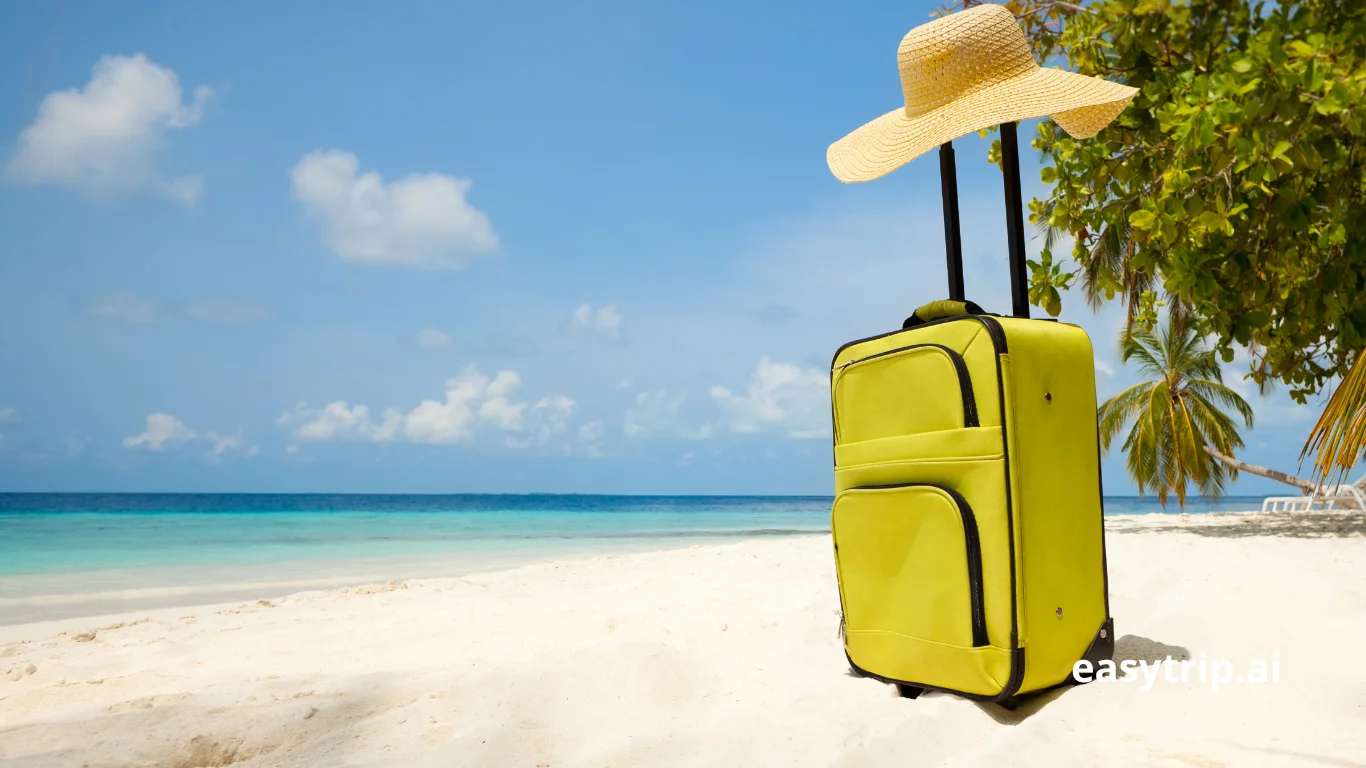Planning a summer vacation can be as exciting as the trip itself, but one key detail can make or break your adventure the length of the summer break. While summer vacation is typically associated with a long stretch of relaxation and travel, its exact duration can vary greatly across the world. From 8 to 12 weeks in the United States to 6 weeks in the UK, understanding how long summer holidays last in different regions can significantly impact your travel planning. Get ready to explore the freedom summer offers while considering the cultural and academic influences shaping these vacation periods globally.
Introduction
In many educational systems, summer vacation spans from 8 to 12 weeks, offering students a break from academic rigors and an opportunity for family bonding and travel. However, the length of these vacations can vary widely depending on regional and institutional policies, leading to both advantages and challenges. Understanding the implications of these breaks is essential for families, educators, and policymakers alike. This insight helps in balancing educational achievement with mental well-being, influencing travel planning and destination choices for global travelers.
Why Knowing the Length of Summer Vacation Matters
Long summer vacations play a significant role in shaping students’ mental health and academic performance. Extended breaks allow students to decompress and recharge after a demanding school year, contributing to positive mental health by providing a much-needed hiatus from studies and exams. Researchers highlight that such breaks are beneficial for stress relief, personal development, and family bonding. Engaging in leisure activities during this period can foster resilience and coping strategies among students.
On the flip side, long breaks come with their challenges, most notably the phenomenon of “summer learning loss.” During extended vacations, students’ retention of academic skills may decline, especially in subjects like math and reading. Studies indicate that the average student can lose about one month’s worth of learning during long summer vacations, affecting low-income students disproportionately due to limited access to enriching activities during this time.
Students’ return to school with diminished skills can impact their confidence and performance in subsequent academic terms, necessitating additional resources and interventions from educators to bridge the learning gap. Thus, knowing the length of summer vacation is crucial to formulating strategies that address these potential drawbacks while maximizing the break’s benefits.
A well-informed approach to summer vacation planning ensures a balanced school calendar, prioritizing both mental well-being and educational achievement. By understanding the implications of vacation length, educators, parents, and policymakers can devise more effective educational frameworks that nurture students’ growth holistically.
How It Affects Travel Planning and Destination Choice
The length of summer vacation is a critical factor in travel planning, influencing not only the duration of trips but also the choice of destinations and experiences. In 2025, a notable trend among U.S. travelers is the inclination towards longer getaways, with the average length of stay rising by 9% year-over-year to approximately 10 days. This shift reflects a desire for more immersive travel experiences rather than quick, surface-level visits.
Comparatively, typical vacation lengths vary across the globe, affecting travel strategies significantly. In the U.S., workers often receive an average of 10 vacation days annually, which constrains their ability to undertake long trips. In contrast, European countries like France and Germany enjoy longer vacations of four to six weeks, allowing more extensive exploration of far-off destinations. Consequently, Americans typically opt for shorter, domestic or nearby international trips, whereas Europeans have the luxury of traveling further afield for extended durations.
The demand for longer vacations presents opportunities for travelers to explore lesser-known destinations and experience local cultures profoundly. In the U.S., travelers express a rising interest in diverse locations, including inland and international spots, rather than just traditional coastal areas. As vacation lengths extend, destinations prioritizing cultural immersion, unique experiences, and natural beauty are likely to attract travelers seeking enriching adventures during extended breaks.
This evolution in travel patterns underscores the relationship between vacation length and destination choice, highlighting the significance of understanding summer vacation durations when planning memorable travels.
Typical Summer Vacation Lengths Around the World
Around the world, summer vacation lengths vary greatly due to cultural, climatic, and educational factors unique to each region. These differences influence travel planning, educational schedules, and societal norms. By delving into the specifics of different continents from North America to the Southern Hemisphere we gain valuable insights into how societies balance the ideals of rest, travel, and education during these extended breaks.
United States: School Breaks and Peak Travel Months
In the United States, summer vacation typically lasts about 10 to 11 weeks. Schools generally end their academic year in late May or early June, resuming in late August or early September. This period is eagerly anticipated as it aligns with peak travel months, seeing families embark on vacations. However, regional variations exist. For example, schools in the Northeast might end later in June compared to those in the Midwest and South, which usually conclude in late May. This variance results from differences in state and district-level educational polices as well as climatic conditions across the country.
Summer breaks are integral to American family culture, offering time to relax, travel, and engage in enriching activities. They often include trips to national parks, beaches, museums, and amusement parks, providing opportunities for cultural exploration and family bonding. However, the long vacation ends up creating logistical challenges for working parents needing childcare or camps, leading to the rise of summer programs designed to provide enriching activities and keep children engaged while out of school.
Additionally, athletes utilize this period for intensified practices, leveraging the school-free weeks to build skills and stamina without academic distractions. This variance in approaches during summer breaks highlights the multifaceted impact of vacation length on various aspects of American life, from leisure and learning to family dynamics and personal development.
Europe: Extended Summer Holidays and Travel Norms
Across Europe, summer vacations tend to be more extended due to cultural priorities emphasizing leisure and family time. On average, summer holidays span from late June to early September, lasting anywhere from six to fourteen weeks depending on the country. For instance, in France and Germany, where vacations can be as long as six weeks, the work-life balance model includes substantial time for employee rest and family bonding. These extended breaks encourage international travel, with many Europeans venturing to neighboring countries to explore diverse cultures within the continent.
In Mediterranean countries like Spain and Greece, summer vacations can stretch up to three months, fostering a culture of relaxation, late dinners, and vibrant festivals. These cultural habits align with the climatic advantage of long, warm summers, offering perfect conditions for both local and international tourists. The British, on the other hand, usually enjoy shorter holidays of about six weeks, balancing their breaks with the educational calendar.
Such diverse vacation patterns underscore the flexibility within European countries to structure their breaks in a manner that respects cultural traditions while supporting economic sustainability through tourism. These norms significantly impact how Europeans plan their summers, reflecting deep-rooted values in family, culture, and travel.
Asia: Varying School Calendars and Regional Differences
Asian countries showcase a wide variety of summer vacation lengths, stemming from diverse educational calendars and regional climates. For instance, in Japan and South Korea, the academic year starts in April, with summer vacations lasting approximately six weeks in July and August. These nations prioritize rigorous education, with breaks structured around exam schedules and educational goals.
In contrast, several Southeast Asian countries, including Thailand and Vietnam, align their academic calendars to their tropical climates, commencing the school year in May or June. Summer breaks here can range from three weeks to two months, dictated largely by national or regional policies. These diverse structures highlight the influence of cultural considerations and climatic conditions on educational practices in the region.
In the Middle East, countries like Saudi Arabia observe extensive summer breaks in alignment with extreme summer heat. From late June to early September, these three-month breaks allow families to travel internationally or enjoy local cultural events and activities.
These variations across Asia illustrate the adaptability of educational systems to regional needs, demonstrating how summer vacations reflect a blend of climate, tradition, and pedagogical priorities.
Australia and the Southern Hemisphere: Summer in a Different Season
In the Southern Hemisphere, where summer occurs from December to February, Australia’s educational calendar offers a unique contrast to the Northern Hemisphere. Australian schools typically begin the academic year at the end of January or early February, following a summer break that generally lasts over six weeks. This coincides with the Christmas and New Year holidays, creating a festive atmosphere during their summer break.
Unlike the Northern Hemisphere, where summer travels often involve escaping cold winters, Australians enjoy their vacations amidst peak summer temperatures. Families embrace this time with trips to the beach, outdoor barbecues, and participation in numerous festivals and events that are characteristic of Australian summer culture. Surfers take advantage of the swells, while families enjoy prolonged stays in coastal regions.
The Southern Hemisphere’s school calendar highlights the distinctiveness of summer breaks occurring within the holiday season a phenomenon unique to this part of the world.
Overall, Australia exemplifies an approach that aligns educational schedules with climatic and cultural dimensions, reflecting diverse educational practices and regional uniqueness.
Average Duration for a Summer Trip
When planning a summer trip, understanding typical vacation lengths can help travelers optimize their time off. Across the globe, vacation durations vary based on individual schedules and travel goals. From short weekend getaways to month-long escapes for families, students, and digital nomads, each trip format has its distinct advantages and considerations. This section delves into the various vacation durations and their specific appeals.
Weekend Getaways (2–4 Days)
Weekend getaways are a perfect choice for those wanting a short, invigorating break from the routine without committing to an extended vacation. Typically lasting between 2 to 4 days, these trips allow travelers to indulge in brief but fulfilling escapes. Such short vacations are ideal for destinations within close proximity, minimizing travel time and maximizing relaxation or adventure.
Weekend trips can embrace numerous themes, including cultural expeditions, nature escapes, or spa retreats. Ideally, these quick escapes should focus on choosing a destination that offers ample attractions or activities concentrated within a small area to optimize time and enjoyment.
Despite their brief nature, weekend getaways can create lasting memories through unique and customizable experiences. They serve as a great opportunity to recharge and explore new surroundings intensively.
1-Week Vacations: Most Popular Format
One-week vacations are highly popular among travelers seeking a balanced mix of exploration and relaxation. A 7-day trip offers sufficient time to dive deep into a new destination while still accommodating the demands of everyday life. This format is particularly appealing because it allows for a comprehensive itinerary without overwhelming the traveler with logistics.
During this typical week-long journey, travelers can create itineraries that combine sightseeing, leisure, and cultural explorations. Whether it’s a city adventure or a beachside retreat, a one-week vacation can meet diverse preferences. The flexibility of this duration offers comfort in knowing there’s ample time to both unwind and venture beyond the usual.
For families, a week-long break strikes a balance between work and school commitments while offering extensive opportunities for bonding and exploration. The seven-day structure often includes travel time, active exploration, and restorative downtime, an ideal balance for both solo travelers and families alike.
2+ Week Holidays: Deep Travel and Adventure
Extended vacations lasting over two weeks provide an excellent opportunity for deep travel and adventure. These trips invite travelers to experience more immersive experiences by exploring multiple destinations, engaging in varied activities, and delving into local cultures.
With more than two weeks at their disposal, travelers can opt for leisurely trips that allow for flexibility and spontaneous adventures. This duration supports itinerary extensions to include both planned and impromptu experiences, enhancing the trip’s richness and depth.
According to surveys, 7% of travelers plan for two-week vacations, prizing them for the opportunity to explore foreign landscapes more thoroughly. For those seeking adventure, two-week or longer vacations often involve outdoor explorations, road trips, or cultural festivals, guaranteeing unforgettable memories.
Extended voyages demand thoughtful planning to ensure cost efficiency while embracing the chance for enriched exploration and genuine experiences.
Month-Long Escapes: For Families, Students, and Digital Nomads
Month-long vacations cater to a diverse group, including families, students, and digital nomads, each finding unique benefits in such extended escapes. Families may utilize this time to explore new destinations together, harnessing opportunities for global exposure and educational enrichment during a single trip.
Students benefit greatly from month-long breaks, especially when connected to academic institutions’ summer vacation schedules. For instance, in the U.S., students enjoy a break from late May or early June until late August. The luxury of an extended trip provides a welcome reprieve from studies, reinvigorating students with fresh perspectives upon return.
Digital nomads thrive in month-long adventures, enabling extended stays in various locations without sacrificing productivity or work-life balance. Technological advancements have made remote work a viable lifestyle, promoting the popularity of digital nomadism.
Such elongated trips illustrate the heterogeneous nature of travel preferences globally, evidencing the vast array of experiences waiting to be embraced.
Factors That Influence the Length of Your Summer Vacation
While planning a vacation, understanding the factors influencing its duration can help optimize your trip. Work schedules, leave policies, school calendars, budget constraints, travel distances, and even visa requirements all play roles in shaping how long you can be away for. Here, we explore these aspects in detail, uncovering the nuances that determine the ideal vacation length for each individual or family.
Work Schedules and Leave Policies
Work schedules and organizational leave policies significantly dictate how long employees can take off for summer vacations. In many countries, employees receive a specific number of vacation days annually, which they can utilize for personal travel. For instance, workers in the U.S. average 10 vacation days per year, whereas European employees often enjoy more generous leave allowances.
Flexible work schedules and remote working arrangements have grown increasingly common, offering more freedom in vacation planning. Employees can negotiate their vacation time based on project requirements, personal commitments, and collaborations with colleagues to ensure organizational continuity.
Organizations implementing flexible leave policies foster a better work-life balance, allowing for guilt-free travel breaks. As such, employees can enjoy ample rest and return refreshed, maintaining productivity and motivation. Ultimately, understanding your work schedule and leave policies is crucial to effectively plan a fulfilling vacation.
School Calendars and Academic Breaks
School calendars profoundly impact family vacation planning, as breaks determine when families with school-aged children can travel. Academic schedules include not only summer vacations but also winter and spring breaks, with durations differing by country and educational system.
For example, the U.S. typically allottes about 10 to 12 weeks for summer vacation, leading to peak travel months from late May to early September. This contrasts with the UK’s 6-week summer break or Spain’s 3-month vacation period. These variations magnify the importance of aligning travel plans with school schedules, ensuring children maximize their educational potential without compromising family bonding.
Understanding school calendars is equally crucial for teachers and school staff planning their time off. Recognizing these factors is essential for comprehensive vacation planning that respects both educational responsibilities and leisure pursuits.
Budget, Travel Distance, and Destination Type
Budget constraints, travel distances, and destination types play decisive roles in shaping vacation lengths. Higher disposable incomes permit longer vacations, while tighter budgets may lead to shorter trips or nearby weekend getaways. Travelers aiming to experience distant or culturally rich destinations often allocate more time due to the significant travel effort involved.
Long flights or train journeys increase travel time, requiring travelers to compensate with extended stays to maximize the experience. Moreover, destination types be it bustling cities, serene countryside, or exotic beaches influence how long tourists wish to explore.
The balance between a desired budget and realistic travel expectations facilitates fulfilling vacation experiences tailored to personal and circumstantial needs.
Visa Limitations for Long-term Travel
Visa constraints frequently impact international travel plans, influencing the duration of vacations based on legal stipulations. Certain countries enforce strict visa regulations that restrict tourist stays, affecting how long travelers can reside in foreign regions.
Complex visa applications, time limits, and costs may introduce challenges for travelers seeking prolonged stays. To navigate visa limitations effectively, travelers can plan appropriately by arranging alternate itineraries or considering destinations with more lenient requirements.
Understanding visa implications is pivotal to ensuring smooth travel experiences while respecting international regulations and policies.
How to Make the Most of Any Summer Break
Optimizing summer vacations, regardless of their duration, requires deliberate planning and creativity. With potential factors influencing trip lengths, travel enthusiasts can engage in various strategies to maximize their breaks. From short getaways to immersive escapes, thoughtful planning ensures that summer vacations are enriching, fulfilling, and rejuvenating experiences.
Planning Short Trips That Feel Long and Fulfilling
Even limited timeframes can present ample opportunity for fulfilling escapes, as long as vacations are well-planned. Planning short trips requires focus and innovative ideas to make any brief excursion feel longer and more satisfying.
Effective planning involves selecting nearby destinations with abundant attractions concentrated within small travel areas. This approach reduces transit time, maximizing discovery and exploration potential. Day trips or weekend adventures offer quick escapes while preserving the balance between daily responsibilities and leisure. By carefully prioritizing activities and immersing fully in each experience, short vacations can deliver long-lasting joy and relaxation.
Turning a 3-Day Weekend into a Microadventure
Transforming a 3-day weekend into an extraordinary microadventure is an excellent way to elevate your summer break experience. This approach involves identifying nearby destinations rich in outdoor activities like hiking, camping, or visiting national parks. Crafting a well-balanced itinerary that includes local cultural exposure, nature excursions, and culinary indulgence can turn any 3-day break into a notable getaway.
Packing smart and strategically selecting versatile clothing ensures sufficient preparedness for different activities or climates. Flexibility in itineraries allows for impromptu exploration, transforming even familiar locales into fresh experiences. This creativity and adaptability ensure that short weekend microadventures are deeply rewarding, offering new perspectives and a much-needed escape from routine.
Packing Smart for Trips of Any Duration
Packing smartly enhances travel efficiency, making it crucial for vacation success regardless of trip length. The art of packing involves considering the nature of the trip, personal preferences, and flexibility to adapt to unforeseen circumstances.
For shorter trips, travelers can benefit from using versatile clothing items suitable for multiple activities. Compact packing techniques, such as rolling clothes or using packing cubes, save space and maintain organization. Longer vacations require additional considerations, like preparing for varied weather conditions or extended activities.
The key is to remain practical and efficient while ensuring comfort throughout the journey. Adequate preparation allows travelers to embrace each experience fully without distractions or inconveniences.
Pair It with EasyTrip AI for Smarter Travel
Optimizing your summer vacation can be effortlessly achieved by complementing traditional planning methods with innovative technology like EasyTrip AI. This advanced travel planning tool leverages artificial intelligence to craft personalized itineraries, enhancing every aspect of your journey. By integrating AI-driven insights with personal preferences, you enhance not just your travel experience, but also the journey’s efficiency and enjoyment.
Get Custom Itineraries Based on Your Trip Length
With EasyTrip AI, travelers can generate bespoke itineraries tailored to their specific travel duration and interests. This smart tool analyzes personalized inputs, curating optimized itineraries that include top attractions, dining options, and activities to match traveler preferences. Whether seeking cultural exploration or leisure relaxation, EasyTrip AI ensures comprehensiveness and excitement throughout your vacation.
Optimize Every Day, No Matter How Short or Long Your Vacation
EasyTrip AI’s unique capability to craft daily plans based on trip duration ensures that every moment of your vacation is designed for maximum enjoyment. The tool uses geo-location and real-time data to provide efficient routes and personalized schedules, helping you avoid common time detractors and prioritize leisure activities.
Regardless of whether it’s a weekend adventure or an extended trip, EasyTrip AI enables you to explore destinations without compromising on experiences.
Real-time Adjustments If Your Plans Change
Travel plans can be unpredictable, with unforeseen circumstances potentially altering itineraries. EasyTrip AI provides real-time adjustments, offering instant itinerary reconfigurations, alternate activities, or new travel routes in response to changing conditions. This flexibility allows travelers to maintain seamless experiences even in less than ideal scenarios, guaranteeing the vacation continues smoothly and enjoyably.
Conclusion
Understanding the intricacies of summer vacation lengths can be pivotal in maximizing the benefits derived from this cherished time. Global variations exist in school calendars and cultural norms, causing vacation lengths to differ significantly, influencing travel planning and destination choices. Whether you’re savoring brief weekend getaways, indulging in week-long escapes, or participating in extensive explorations spanning months, the duration you choose plays a vital role in shaping the depth and joy of your adventures.
Factors like work schedules, budget constraints, and visa limitations require careful consideration to align with personal and familial preferences. Strategic planning utilizing tools like EasyTrip AI can enhance efficiency and enjoyment, ensuring that every moment of your trip delivers memorable experiences. Embrace thoughtful preparation, remain adaptable, and harness technological advancements to turn your summer vacation no matter its length into a transformative journey.






